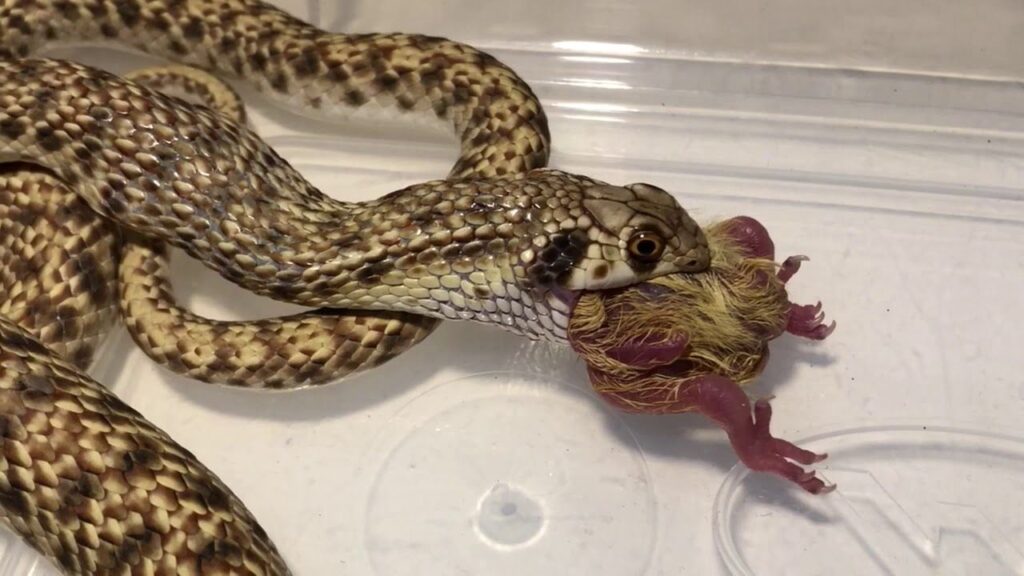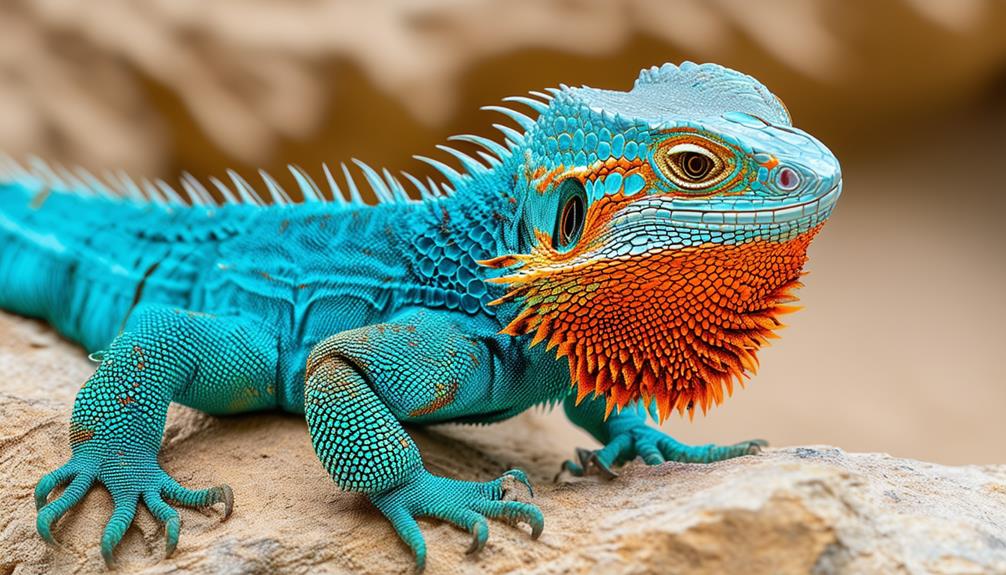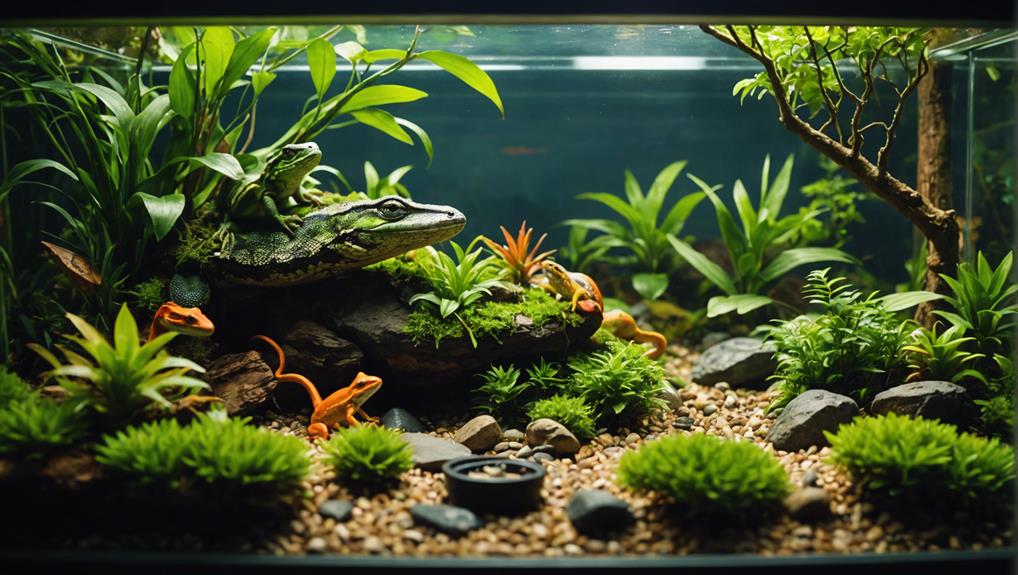You’re likely unaware that the Egyptian false cobra, often feared and misunderstood, is a non-venomous snake that poses no life-threatening danger to humans. Its aggressive behavior when threatened has led to a deadly reputation myth, but in reality, there are no recorded fatalities attributed to it.
This desert dweller has adapted to its harsh environment with unique strategies, including thermal shielding, nocturnal behavior, and camouflage abilities. As you explore the Egyptian false cobra’s world, you’ll discover more about its fascinating habitat, body language, and the threats it faces, and learn how you can contribute to its conservation.
There’s more to uncover about this intriguing creature.
Debunking the Deadly Reputation Myth
You’ve likely heard that the Egyptian false cobra is a deadly serpent, but the truth is that this myth has been greatly exaggerated. In reality, the Egyptian false cobra is a relatively harmless snake that’s often misunderstood. While it’s true that the Egyptian false cobra can deliver a painful bite, its venom isn’t life-threatening to humans. There are no recorded fatalities attributed to the Egyptian false cobra.
The myth surrounding the Egyptian false cobra’s deadliness likely stems from its aggressive behavior when threatened. When cornered or handled carelessly, the Egyptian false cobra will hiss, flatten its body, and vibrate its tail, making it seem more intimidating than it is. This display is meant to deter predators, not attack humans.
The Egyptian false cobra is generally a shy and reclusive creature that prefers to avoid humans altogether.
It’s essential to separate fact from fiction when it comes to the Egyptian false cobra. By understanding the truth about this serpent, we can work to dispel harmful stereotypes and promote a greater appreciation for these fascinating creatures. By doing so, we can foster a culture of respect and compassion for all living beings, including the often-maligned Egyptian false cobra.
Desert Dweller Adaptation Strategies
How do Egyptian false cobras thrive in the harsh desert environment, where blistering temperatures and scarce resources would seem to make survival a formidable task? You might be surprised to learn that these remarkable creatures have evolved unique adaptations to not only survive but thrive in this unforgiving landscape.
One key strategy is their ability to regulate their body temperature. When the sun beats down, they can raise their bodies off the hot sand using a technique called “thermal shielding,” allowing them to maintain a stable body temperature. They also exhibit “nocturnal behavior,” meaning they’re most active at night, reducing their exposure to the scorching daytime heat.
| Adaptation | Description | Benefit |
|---|---|---|
| Thermal Shielding | Raise body off hot sand | Regulate body temperature |
| Nocturnal Behavior | Active at night | Reduce exposure to heat |
| Burrowing | Dig complex networks of tunnels | Escape heat, find prey |
| Camouflage | Blend into surroundings | Avoid predators, sneak up on prey |
| Water Conservation | Efficient kidney function | Minimize water loss |
These adaptations enable Egyptian false cobras to conserve energy, find food, and avoid predators, ultimately ensuring their survival in the harsh desert environment. By understanding these strategies, you’ll gain a deeper appreciation for the remarkable resilience of these incredible creatures.
Unveiling the False Cobra’s Habitat
As you explore the desert landscape, you’re likely to stumble upon the Egyptian false cobra‘s habitat, a complex network of tunnels and burrows that provide shelter from the harsh environment.
These underground dwellings offer protection from extreme temperatures, predators, and competitors, allowing the false cobra to thrive in this arid setting.
You’ll notice that the habitat is often characterized by sandy or rocky terrain, with scattered vegetation and sparse vegetation.
The false cobra is well-adapted to this environment, using its slender body and agility to navigate the narrow tunnels and burrows with ease.
As you venture deeper into the habitat, you’ll observe that the tunnels often have multiple entrances and exits, providing the false cobra with quick escape routes and access to food sources.
The burrows themselves are intricately constructed, with separate chambers for resting, hiding, and hunting.
The Egyptian false cobra’s habitat is a demonstration of its remarkable adaptability and resourcefulness.
Unique Body Language and Defense
When threatened, the Egyptian false cobra resorts to a unique defense mechanism, relying on its slender body to perform a series of impressive, attention-grabbing displays. You might be surprised by the false cobra’s agility and flexibility as it responds to potential threats. Its body language speaks volumes, and understanding these cues can help you better appreciate this fascinating creature.
As you observe the Egyptian false cobra, you’ll notice it employs a range of defense strategies.
- Raising its body off the ground: The false cobra will lift its body off the ground, making itself appear larger and more intimidating to potential predators.
- Performing a ‘hood’ display: By flattening its head and neck, the false cobra creates a hood-like shape, making its body appear more menacing.
- Vibrating its tail: The false cobra will rapidly vibrate its tail, creating a buzzing noise that can startle or deter predators.
These defense mechanisms are essential to the false cobra’s survival, and understanding them can help you better appreciate the intricate relationships within its ecosystem.
The Asp Misidentification Conundrum
As you explore the Egyptian False Cobra, you’ll likely stumble upon a common misconception: its frequent misidentification as the Asp.
This confusion arises from the physical resemblance between the two species, leading to a reptile identity crisis of sorts.
You must understand the distinguishing characteristics of each species to avoid perpetuating this mistake.
Snake Species Confusion
You’re likely to mistake the Egyptian false cobra for the Egyptian cobra, also known as the asp, due to their similar appearance. However, to make a correct identification and provide proper care for these snakes, you need to recognize the differences.
The following distinctions are key:
- Scale pattern: The Egyptian false cobra has a more mottled, brownish-gray coloration, whereas the Egyptian cobra has a more uniform, darker brown color.
- Head shape: The Egyptian false cobra has a more narrow, pointed head, whereas the Egyptian cobra has a broader, more rounded head.
- Behavior: Egyptian false cobras are generally more docile and less aggressive than Egyptian cobras.
Reptile Identity Crisis
Misidentifying an Egyptian cobra as an asp can have serious consequences, so it’s imperative to recognize the differences between these two species.
You might be surprised to learn how often these snakes are confused with one another. As someone who wants to help others, it’s necessary to get it right.
The Egyptian cobra, also known as the Nubian cobra, is a venomous snake found in North Africa. It has a distinctive hood, which it flares out when threatened.
The asp, on the other hand, is a general term often used to describe the Egyptian cobra, but it’s also the name of a specific species, the Egyptian asp. This smaller, non-venomous snake is often mistaken for the Egyptian cobra, leading to incorrect identifications.
It’s paramount to understand the distinguishing characteristics of each species to avoid misidentification.
You can start by examining the snake’s size, color, and patterns. The Egyptian cobra has a more slender build and a distinctive pattern of markings on its body.
Threats to the Egyptian False Cobra
As you explore the threats facing the Egyptian False Cobra, you’ll discover that its survival is threatened by various human activities.
Habitat destruction, human conflict, and poisoning accidents are all taking a toll on this species.
Habitat Destruction Threats
Rapid urbanization and agricultural expansion are eating away at the Egyptian False Cobra’s habitat, leaving it with limited spaces to hunt, breed, and thrive.
As you explore the Egyptian False Cobra’s natural environment, you’ll notice the devastating impact of human activities on its habitat. The destruction of its habitat is a significant threat to the species’ survival.
Wetlands, a vital habitat for the Egyptian False Cobra, are being drained for agricultural purposes, reducing the species’ food sources and shelter. The construction of dams and canals has disrupted the natural water flow, affecting the species’ migration patterns and breeding habits.
The increasing fragmentation of habitats has led to inbreeding, weakening the species’ gene pool and making it more vulnerable to diseases.
It’s essential to recognize the urgency of preserving the Egyptian False Cobra’s habitat to safeguard its survival. By understanding the consequences of habitat destruction, you can contribute to conservation efforts and help protect this magnificent species.
Human Conflict Rises
You’ll frequently encounter Egyptian False Cobras in areas with high human activity, where they’re often perceived as threats to human safety and livelihood.
This misconception leads to increased conflict between humans and these snakes.
As you explore the habitats of the Egyptian False Cobra, you’ll notice that human settlements and agricultural lands encroach on their territories.
In response, the snakes adapt to their new environment, venturing closer to human dwellings in search of food and shelter.
This proximity sparks fear and hostility among locals, who may view the snakes as pests or threats to their families and livestock.
As a result, humans may take drastic measures to eliminate the perceived threat, further endangering the Egyptian False Cobra population.
Recognizing that these snakes aren’t inherently aggressive and play a crucial role in maintaining ecological balance is crucial.
Poisoning Accidents Increase
Since the Egyptian False Cobra‘s habitat overlaps with agricultural lands and human settlements, you’re more likely to encounter pesticides and other toxic substances that can be deadly to these snakes. As a result, poisoning accidents have increased, posing a significant threat to the species’ survival.
Unfortunately, the Egyptian False Cobra’s curiosity and hunting habits make them prone to ingesting toxic substances, which can be fatal.
Pesticide residues: Chemical residues on crops can be ingested by the snakes, causing severe poisoning.
Rat bait stations: The snakes often consume rodents that have ingested rat poison, which is then transmitted to the snakes.
Improper waste disposal: Toxic substances dumped in the environment can contaminate the snakes’ food source, leading to poisoning.
It’s essential to address these issues to safeguard the Egyptian False Cobra’s survival. By taking measures to reduce pesticide use, properly disposing of toxic waste, and promoting coexistence with humans, we can mitigate the impact of poisoning accidents on these magnificent creatures.
Conservation Efforts and Future
As you explore the conservation efforts for the Egyptian false cobra, it becomes apparent that collaborative initiatives are crucial to protecting this species and its habitats.
You’ll find that organizations, researchers, and local communities are working together to develop effective conservation strategies. These efforts focus on habitat preservation, education, and research to guarantee the long-term survival of the Egyptian false cobra.
You can contribute to these efforts by supporting organizations that work to protect the Egyptian false cobra and its habitats.
You can also spread awareness about the importance of conservation and the misunderstood nature of this species. By doing so, you’ll be helping to reduce the number of poisoning accidents and promote a culture of coexistence with these amazing creatures.
Looking ahead, the future of the Egyptian false cobra relies on sustained conservation efforts and continued research.
As you stay informed about the latest developments, you’ll be inspired by the progress being made.
You’ll see how conservation efforts aren’t only safeguarding the Egyptian false cobra but also benefiting local ecosystems and communities.
Frequently Asked Questions
What Is the Average Lifespan of the Egyptian False Cobra?
You’re wondering about the average lifespan of a fascinating snake! Typically, you can expect an Egyptian false cobra to live around 10-15 years in the wild, but with proper care, they can thrive up to 20 years in captivity.
Can the Egyptian False Cobra Be Kept as a Pet?
Are you ready to take on a slithery challenge? You’ll need to weigh the Egyptian false cobra’s specialized care and housing requirements, as well as local laws, before deciding to bring one home as a pet.
Are Egyptian False Cobras Social Creatures or Solitary Animals?
You’re wondering if Egyptian false cobras are social creatures or solitary animals. In the wild, they’re typically solitary, but in captivity, they can thrive in pairs or small groups if introduced carefully and provided with a suitable environment.
What Is the Primary Source of Food for the Egyptian False Cobra?
As you venture on a journey to uncover the secrets of the desert, you’ll discover that rodents are the primary source of food for the Egyptian false cobra, its hunger satisfied by the whispers of the sandy dunes.
Can the Egyptian False Cobra Be Found in Other Parts of Africa?
You might wonder, can this snake be found in other parts of Africa? Yes, you’ll find the Egyptian false cobra in sub-Saharan regions, from Senegal to Ethiopia, and south to South Africa, inhabiting savannas and grasslands.


